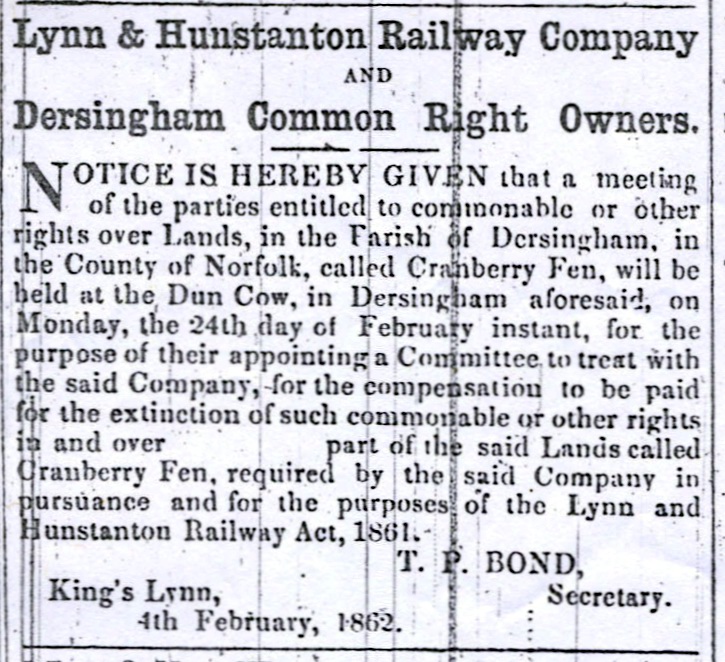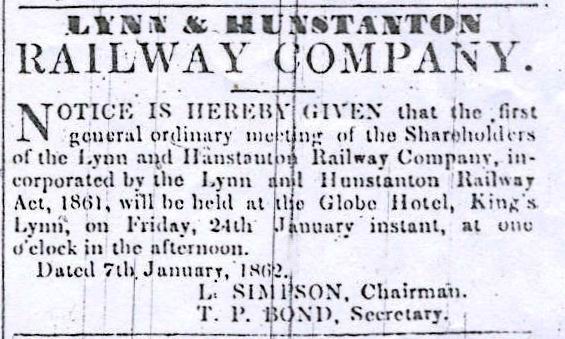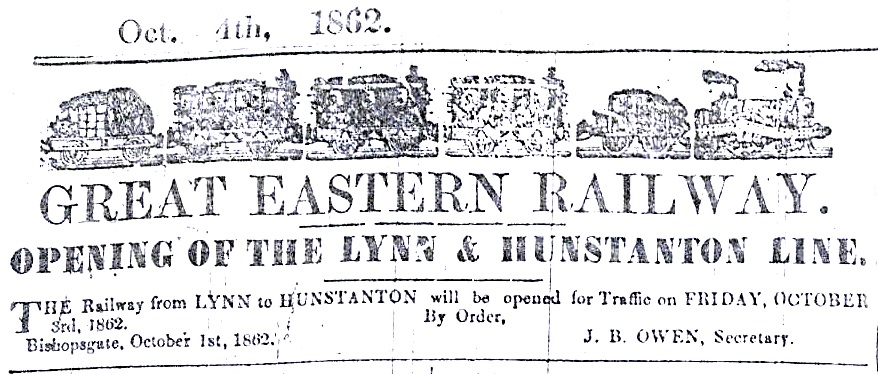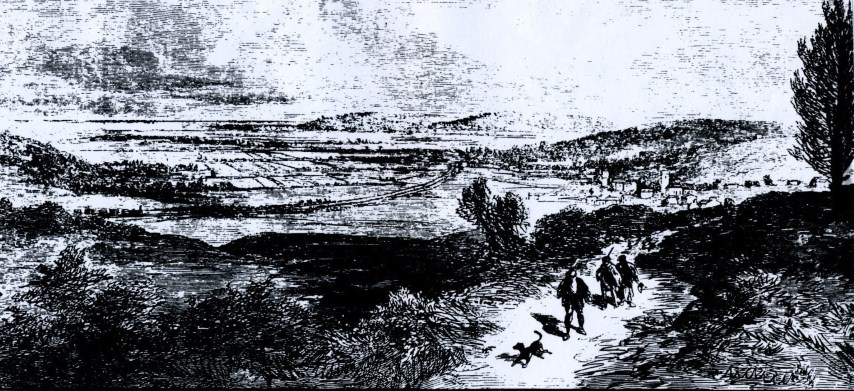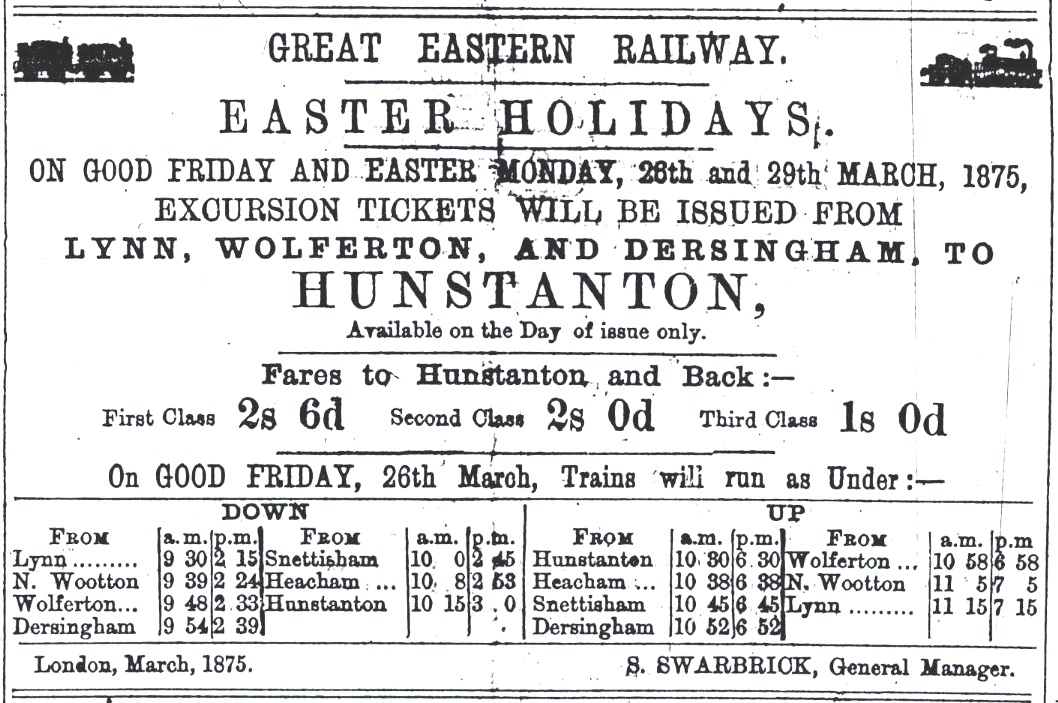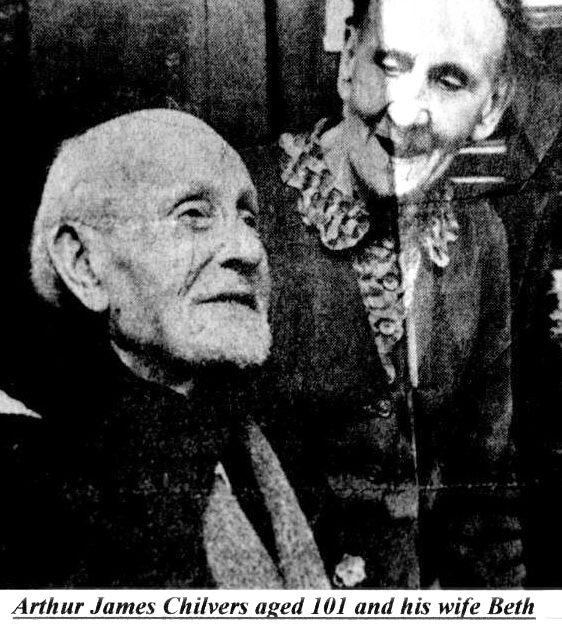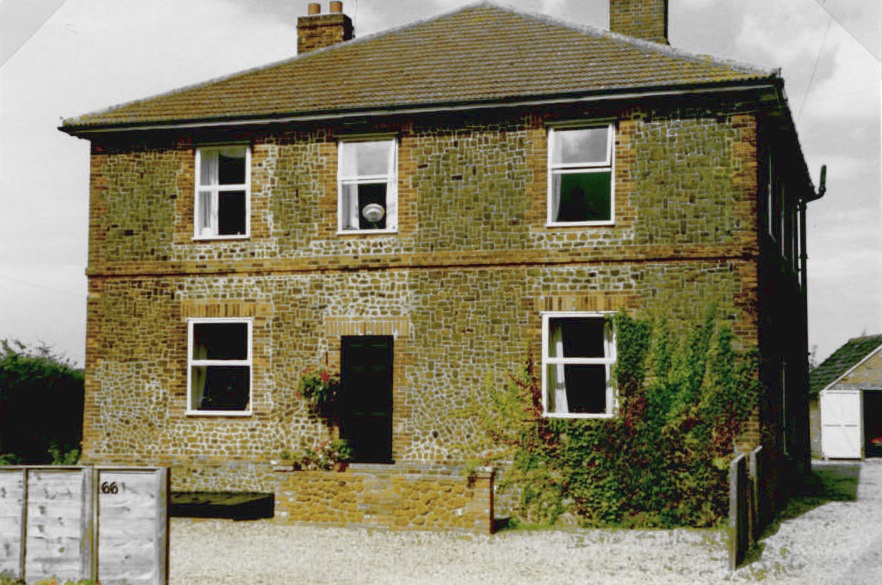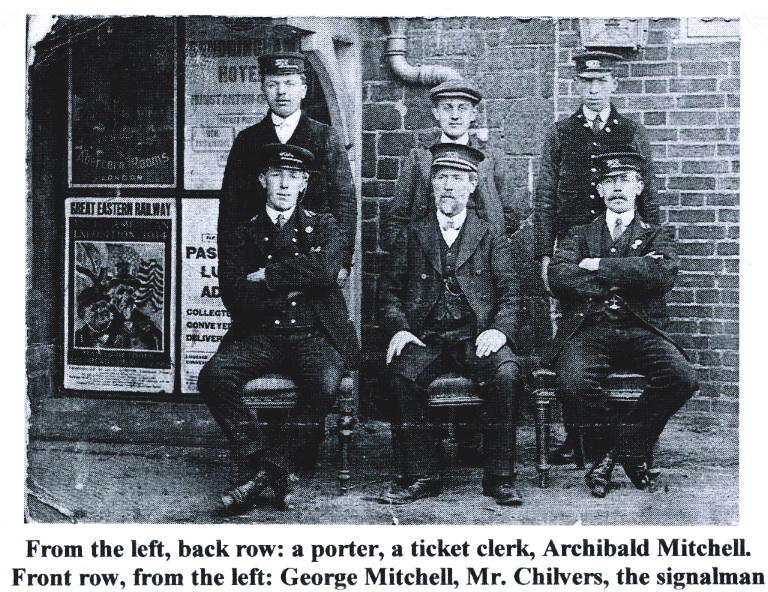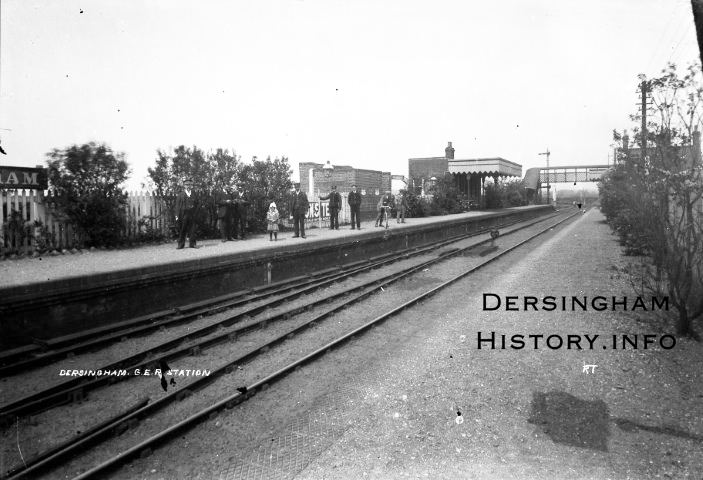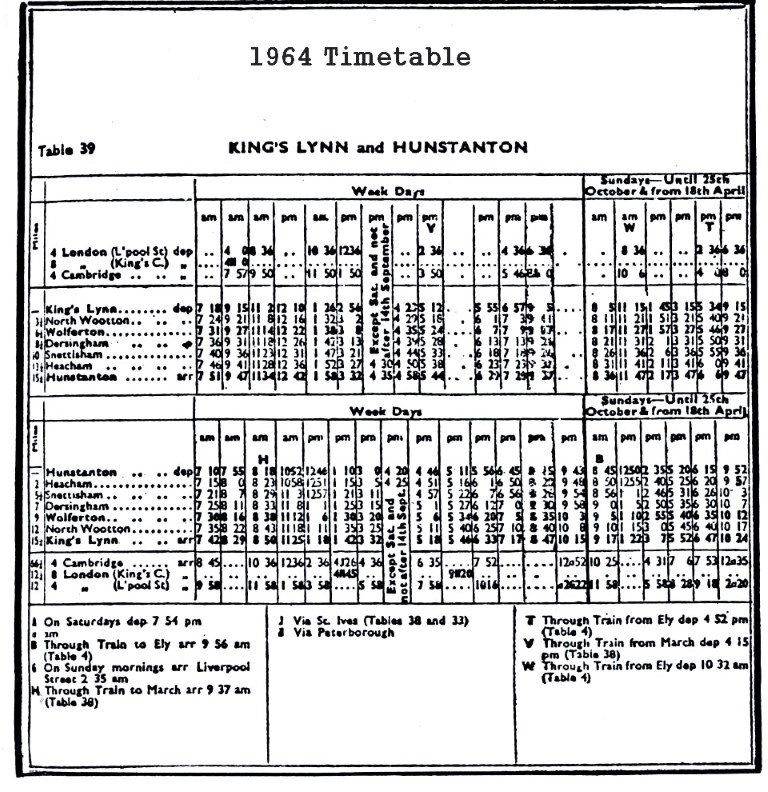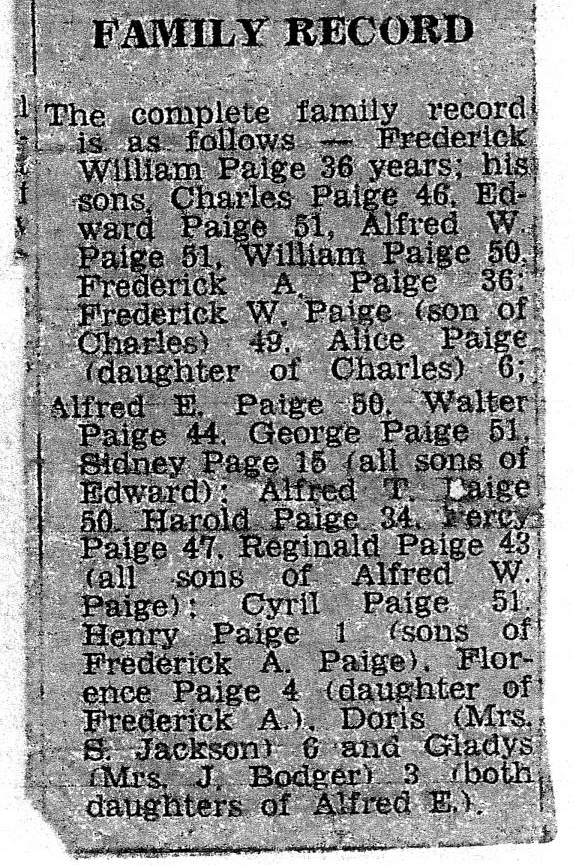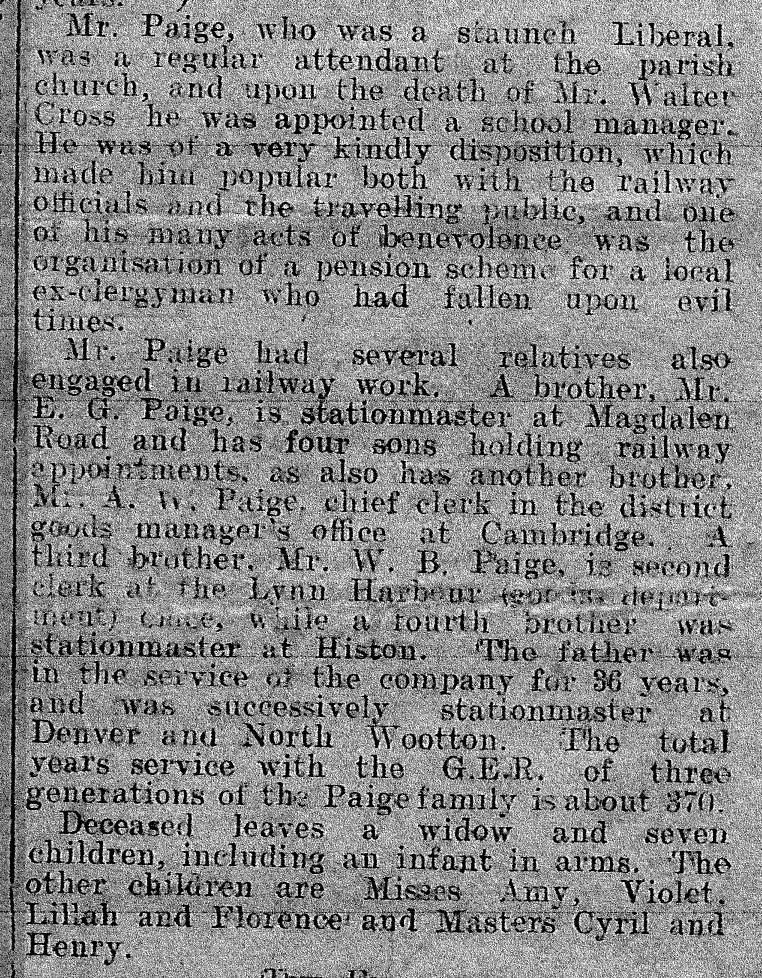THE LYNN ADVERTISER AND WEST NORFOLK HERALD.
LYNN AND HUNSTANTON RAILWAY.
We trust that by this time many who thought the project of a railway from Lynn to Hunstanton and the idea of making a watering place within a few miles of Lynn, wild and visionary, and only calculated to end in disappointment and loss, now regard the project as a good one, the idea as one calculated to result happily and be productive of great benefits to Lynn in many ways - direct and indirect. We have upon one or two occasions, when drawing the attention of our readers to matters connected with the commerce of the locality, ventured to intimate that the amount of spirit and enterprize necessary to insure success and keep our town upon terms of equality with our neighbours and in a position to realize all its natural advantages has not always been forthcoming in due time. Lynn is not what it once was. This is to a certain extent a humiliating fact; for there are many reasons why, instead of retrograding, as it has, the commerce and the importance of the town should have been progressive. This will never be the case, however, while those in whose hands rest not only individual but collective success adopt a narrow and timid policy comprehended in the maxim - that the commercial interests and the general prosperity of a town must be necessarily confined within the limits of its municipal boundary.
When the Lynn and Hunstanton railway was first talked of, we heard many say that it was ridiculous to propose making a railway to a barren beach; but we expect to see there a large and flourishing town which, instead of drawing from Lynn any of its wealth, and of its trade, or in any manner injuring it one way or other, will, on the contrary, draw from us the chief portion of its supplies, increase our trade, add to our importance and afford those who desire to invest money profitably, in undertakings calculated to give employ to vast numbers and advance local interests, an opportunity for doing so with perfect safety. Under these circumstances we have given the Lynn and Hunstanton Railway a very hearty support. We call attention to the first general meeting of the directors and shareholders, held on Friday, the 24th ult, not so much to advocate the claims of the Railway Company, for this we have done before, as to note the progress of the project and at the same time show our readers that there is much to be done yet, and that it would be well that we should take our part in doing it.
We published a full report of the proceedings at the meeting in a second edition of last week's issue, and in order that all our readers may, see it we reproduce it in our present number. We hope those interested in the welfare of the town and locality will read the report with attention. They will see that the engineer's report is all that could be desired and much more than could have been expected. The works are advancing with great rapidity, and, thanks to the prudent foresight of the originators of the ....? (damaged original here)
...... (par)? ticularly so as they have in it, given us proof that they have not forgotten that other duties fell upon them besides the mere tasking of a line of railway from place to place. In order to secure the interests of the shareholders and render the project justifiable and remunerative it was necessary that arrangements 'should be made for erecting buildings and affording accommodation to those visitors and permanent residents whom we hope to see among us when the line is completed This part of their duty has not been neglected. On the contrary, we deem it an excellent assurance of their extreme vigilance when we see that in so short a time they are able to report that they have been engaged in considering with Mr. L'ESTRANGE the whole arrangements, and have adopted a scheme which, whilst it will preserve a general uniformity of character in the houses, will allow the greatest freedom to individual requirements. Mr. L'ESTRANGE has himself undertaken the important work of roads, sewerage and the laying out of public walks and recreation grounds, and we are quite sure these things could not be left in better hands. Then to secure a vigorous commencement of building operations, the ground rent in the first instance will be at the very moderate rate of 1d per square yard per annum, with a small annual fixed payment by way of rate for the maintenance of the public grounds and works, such as is customary in all well regulated places where the comforts of visitors are essential to the general prosperity. The ground plan will be before the public in a few days, and we hope to find that those of the good people of Lynn in a position to take up such an enterprise will give it all the attention it claims and is entitled to. Let it be remembered that Hunstanton is not to be created at the expense of Lynn, but that calling into existence a watering place which there can be no doubt whatever will be so well frequented and rapidly rise into importance, we shall materially advance the commercial interests of our town. This has been well shown by the chairman of the meeting, Mr. LIGHTLY SIMPSON. The railway directors have, as that gentleman informed the meeting, endeavoured to do something for us; let us now do something for ourselves while time and opportunity serve. We have undoubtedly neglected many opportunities; let us not permit the present one to pass through our hands unprofitably. We may, if we will, share largely in the advantages derivable from participation in the project now before us; we are adding another link to that system of railway communication upon which our local prosperity so much depends, and at the same time we have afforded us an opportunity for investment such as is rarely offered within the scope of our own supervision, with the two-fold recommendation or being advantageous to the locality generally and certain in its pecuniary results.
When the plan of the ground for building at Hunstanton and all details are in our possession we may return to this subject and more fully lay the claims of, this important enterprise before our readers, especially reminding those who have taken any interest in the railway that the line without the town would be a superfluity. Having made the one so one must make the other.------------------


